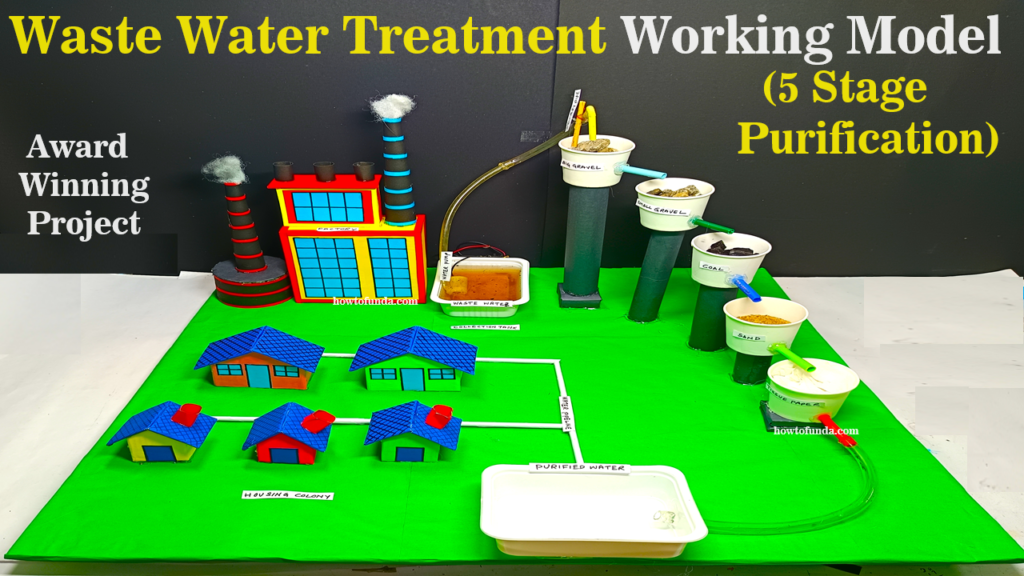
Creating a working model of a waste water treatment system with five levels of purification using paper cups can be an engaging and educational project. Here’s a step-by-step guide on how to build it:
Materials needed:
- Paper cups (multiple)
- Big gravel
- Small gravel
- Activated charcoal or coal (you can use small pieces)
- Sand
- Cotton balls
- Plastic container or basin (to collect purified water)
- Dirty water (can be represented by colored water or simply tap water)
Instructions:
- Prepare the Containers:
- Arrange the paper cups in a row or in a stacked manner to represent the different purification levels. You’ll need five cups for each level.
- Label each set of cups with the materials they contain: big gravel, small gravel, coal, sand, and cotton.
- Set Up the Filtering System:
- In the first set of cups labeled “big gravel,” fill the bottom cup with big gravel.
- Place another cup on top of the gravel-filled cup, ensuring there are no gaps between the cups.
- Repeat this process for the remaining levels, filling each set of cups with the corresponding filtering material (small gravel, coal, sand, and cotton) in separate cups.
- Pour the Dirty Water:
- Pour the dirty water (representing factory waste) into the top cup of the first set labeled “big gravel.” This water will trickle down through the filtering layers, getting purified as it passes through each level.
- Observe the Filtration Process:
- As the water passes through each level, observe how the filtering materials remove impurities and particles from the water.
- Explain to observers how each layer works:
- Big gravel: Removes large debris and solids.
- Small gravel: Further filters out smaller particles.
- Coal: Absorbs chemicals and organic compounds.
- Sand: Filters out finer particles and sediments.
- Cotton: Acts as a final polishing filter, removing any remaining impurities.
- Collect Purified Water:
- Place a plastic container or basin at the bottom to collect the purified water as it passes through all five levels of filtration.
- Observe the clarity and cleanliness of the collected water compared to the original dirty water.
- Discuss the Results:
- Once the purification process is complete, discuss with observers the importance of waste water treatment in removing pollutants and contaminants from industrial wastewater.
- Highlight the role of each filtering material in the purification process and how they contribute to making the water safe for disposal or reuse.
By following these steps, you can create a simple yet effective working model of a waste water treatment system using paper cups and common filtering materials. Adjustments can be made based on available resources and desired level of detail or complexity.

